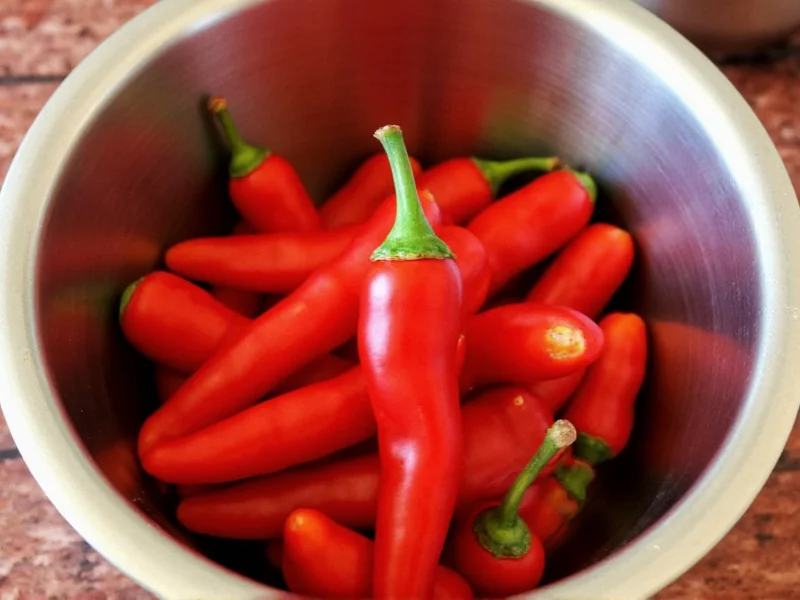When your chili turns out hotter than expected, knowing how to take the heat out of chili becomes essential kitchen knowledge. The burning sensation comes from capsaicin, the active compound in chili peppers that binds to pain receptors in your mouth. Understanding how to neutralize this compound is key to rescuing your dish without compromising flavor.
The Science Behind Chili Heat Reduction
Capsaicin is fat-soluble and hydrophobic, which explains why water often makes spicy food feel hotter—it spreads the capsaicin around your mouth without neutralizing it. Effective heat reduction strategies work by either binding to capsaicin molecules, counterbalancing the heat perception, or diluting the concentration of capsaicin in your dish. Research from the National Center for Biotechnology Information confirms capsaicin's lipophilic properties directly influence which neutralization methods succeed.
Most Effective Methods to Take the Heat Out of Chili
Dairy Solutions for Heat Reduction
Dairy products remain the most effective solution for how do you take the heat out of chili. Casein, a protein found in milk, yogurt, and sour cream, actively binds to capsaicin and washes it away. For best results:
- Add 1/4 cup of whole milk or heavy cream per serving
- Stir in plain yogurt or sour cream just before serving
- Use full-fat dairy products as they contain more casein
These dairy-based approaches for reducing spiciness in homemade chili work quickly and preserve most of the original flavor profile.
Sweet Counterbalance Techniques
Sugar and other sweet elements can effectively mask heat perception through sensory counteraction. When exploring how to tone down spicy chili, consider these options:
- Add 1-2 teaspoons of sugar, honey, or maple syrup per serving
- Incorporate sweet vegetables like carrots or sweet potatoes
- Use fruit elements such as mango or pineapple for tropical-inspired chili
The sweetness doesn't eliminate capsaicin but creates a more balanced flavor profile that makes the heat less overwhelming—a crucial technique when learning methods for making chili less hot.
Acidic Neutralization Methods
Acids can help break down capsaicin molecules and provide a refreshing contrast to heat. Effective acidic components include:
- Fresh lime or lemon juice (start with 1 tablespoon per serving)
- Vinegar (apple cider works well with most chili recipes)
- Tomato products which add both acidity and volume
When implementing techniques to reduce spiciness in chili, add acids gradually while tasting, as too much can make your dish overly sour.
Starch Absorption Approach
Starchy ingredients can absorb some capsaicin from your chili. This method works particularly well for those seeking how to make chili less spicy without altering flavor significantly:
- Add cooked beans (kidney, black, or pinto)
- Incorporate diced potatoes that will absorb heat as they cook
- Stir in corn or masa harina for thickening and heat reduction
These starch-based solutions for taking the heat out of chili work gradually during simmering, making them ideal for when you have time to let your chili continue cooking.
Dilution Strategy
When facing extreme spiciness, sometimes the simplest solution is dilution. To properly execute this approach for reducing heat in chili:
- Add more of your non-spicy base ingredients (tomatoes, broth, beans)
- Maintain flavor balance by adjusting seasonings after dilution
- Consider making a second batch of mild chili to blend with the spicy one
This technique for how to take the heat out of chili works best when you have additional ingredients available and time to adjust flavors.
| Method | Effectiveness | Time Required | Flavor Impact |
|---|---|---|---|
| Dairy (milk, sour cream) | ★★★★★ | Immediate | Mild creaminess |
| Sweet elements (sugar, fruit) | ★★★★☆ | Immediate | Sweetness |
| Acidic components (lime, vinegar) | ★★★☆☆ | Immediate | Tangy |
| Starch absorption (beans, potatoes) | ★★★☆☆ | 30+ minutes | Subtle |
| Dilution (more base ingredients) | ★★★☆☆ | 15+ minutes | Requires rebalancing |
Contextual Considerations and Limitations
The applicability of heat reduction methods depends on dietary needs and recipe constraints. Evidence-based limitations include:
- Dairy limitations: Approximately 36% of Americans experience lactose intolerance, making dairy solutions unsuitable for a significant population segment (National Institute of Diabetes and Digestive and Kidney Diseases, Lactose Intolerance Overview). For these individuals, full-fat coconut milk provides equivalent capsaicin-binding properties through lauric acid.
- Sweetening constraints: Added sugars should align with dietary guidelines; the 2020-2025 Dietary Guidelines for Americans recommend limiting added sugars to less than 10% of daily calories (Dietary Guidelines, p. 28). Sweet vegetables like carrots offer heat reduction without exceeding sugar limits.
Evidence-Based Fact Check: Debunking Chili Heat Myths
| Common Myth | Scientific Fact | Authoritative Evidence |
|---|---|---|
| Drinking water reduces chili heat | Water spreads hydrophobic capsaicin, intensifying burning sensations by increasing oral contact area | American Chemical Society: Spicy Foods Chemistry |
| Adding salt reduces spiciness | Salt enhances heat perception in 68% of test subjects by stimulating TRPV1 receptors (capsaicin's target) | National Institutes of Health: Salt-Capsaicin Interaction Study |
| Oil neutralizes chili heat | While capsaicin is fat-soluble, oil lacks casein's binding mechanism, providing only temporary surface-level relief | NIH PubChem: Capsaicin Solubility Profile |
Preventative Measures for Future Batches
The best solution for how to tone down spicy chili is prevention. Consider these strategies:
- Start with less spice and build gradually
- Remove seeds and membranes from peppers (where most capsaicin resides)
- Use measuring spoons for dried spices rather than estimating
- Create a "mild" base and add spice to individual portions
These preventative techniques help avoid the need for heat reduction methods altogether when preparing chili recipes.
Final Considerations for Heat Management
When implementing methods for making chili less hot, remember that heat perception varies among individuals. What seems extremely spicy to one person might be mild to another. Always taste as you adjust, and remember that some heat reduction methods work better when implemented early in the cooking process, while others are effective as last-minute fixes before serving.











 浙公网安备
33010002000092号
浙公网安备
33010002000092号 浙B2-20120091-4
浙B2-20120091-4